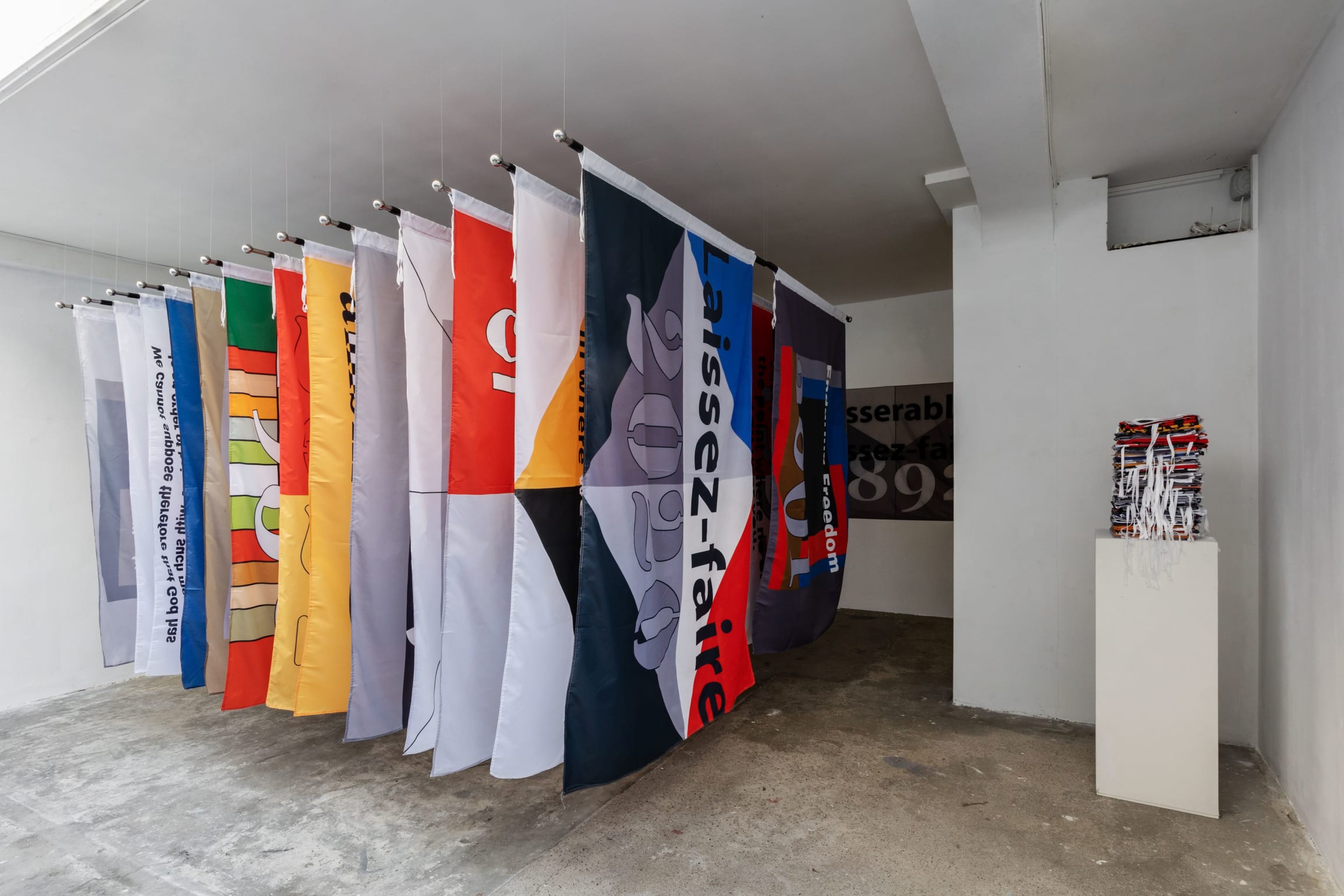09 may 2023, Flor Linckens
Last chance: a layered labyrinth about freedom
Until 13 May, Lumen Travo Galerie in Amsterdam presents an art installation by Ni Haifeng, that the artist previously presented in the Amsterdam Museum. Haifeng made the installation "In the Labyrinth of Freedom" especially for the exhibition 'Freethinkers' (2021-2022), on the occasion of the 75th anniversary of the Dutch Humanist Association. In the museum exhibition, contemporary events were placed in a historical context, in an arrangement that invited the viewer to reflect and discuss.
With the installation "In the Labyrinth of Freedom", Haifeng sets himself the same goal. How do we define the paradoxical term freedom and what does it say about how we interpret the limits and constraints of freedom? How does the individual relate to society as a whole in this context, and to what extent are they responsible for each other's freedom? A flag usually represents an idea or entity and it is rarely just a piece of textile: they play a role in our language, provide connection or division and the flipping or burning of flags can provoke strong emotional reactions. Haifeng uses the flags to delve deeper into notions such as free will, selfhood and the ideology surrounding individualism.
Haifeng's poetic and layered practice encompasses various disciplines including photography, video and installation and centers on themes such as language and meaning, identity, (post)colonialism and globalization, the construction of historical narratives and the exchange between various cultural systems.
"In the Labyrinth of Freedom" is an immersive and occasionally claustrophobic presentation of large-scale, coloured and monochrome flags with texts and dates, that are presented in various ways: hung on the wall, folded in a pile on a plinth, stretched close together on horizontal banners or hanging limply from a fully vertical pole. The original presentation in the Amsterdam Museum consisted of 268 flags and was displayed in similar ways. Haifeng uses colours and abstract shapes and sometimes a more explicit background, such as a black and white photo of a Rothko.
The flags bear philosophical texts and loaded questions such as 'Does anyone suppose a slave trade would help their civilization?' (1780-1825), from a speech by the British abolitionist William Wilberforce. A second flag reads, 'The proletarians have nothing to lose but their chains (1848)', from the famous Communist Manifesto that was published during that year by Karl Marx and Friedrich Engels. In a corridor in the exhibition you can read 'History only suggests that capitalism is a necessary condition for political freedom (1962)', from the book Capitalism and Freedom by the American economist Milton Friedman. Another flag states 'We feel free because we lack the very language to articulate our unfreedom (2001)', a quote from the famous philosopher Slavoj Žižek. Other flags refer to political or social phenomena (‘Anti-Vaxxer (2021)’) or well-known economic terminology such as laissez-faire, followed by the year in which the term was first used. Another flag mentions 'Enduring Freedom' (2001), the most unfortunate name for the US military operation in Afghanistan. By citing the dates of the sometimes contradictory texts, the artist places the discourse on freedom in a historical context and at the same time, he emphasises the contradictions in our history. Additionally, the works are presented in a historical period that is characterised by neoliberalism, late stage capitalism, populism, the rise of the extreme right, polarisation, war and crises that follow each other in rapid succession.
Ni Haifeng was born in Zhoushan in China. The artist graduated from the Zhejiang Academy of Fine Arts (now: China Academy of Art) and currently divides his time between Beijing and Amsterdam. His work was also shown at Museum M+ in Hong Kong, the Bonnefantenmuseum in Maastricht, Huis Marseille in Amsterdam, Museum De Lakenhal in Leiden, Espace Culturel Louis Vuitton in Paris, GEM in The Hague, Kunstinstituut Melly in Rotterdam, the Queensland Art Gallery in Brisbane and during Manifesta.



